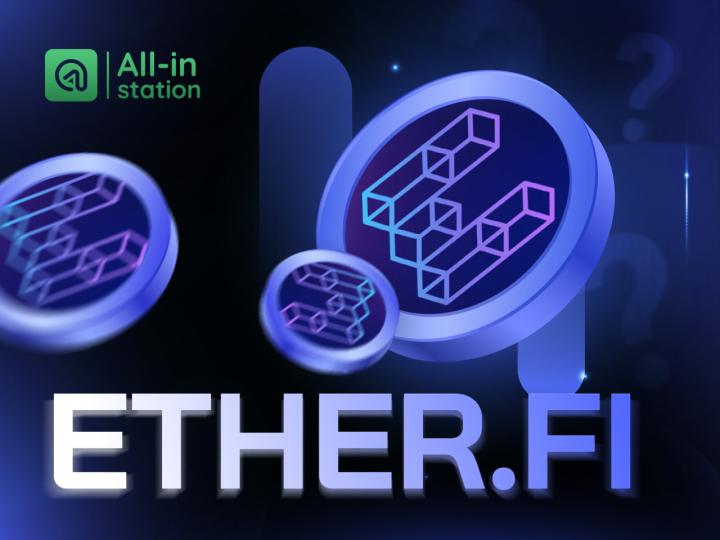Digital asset management company CoinShares recently released a report , which explores what impact the adoption rate of Ethereum, the leading Altcoin, will have on the long-term supply and demand of ETH? This report also reveals that the main factor driving the value of Ethereum is the demand for transactions, that is, how much are users willing to pay for the services provided by the Ethereum network? In addition, CoinShares also expressed concerns about the long-term value of Ethereum because most transaction demand is concentrated in speculative applications.
Table of Contents
ToggleA small amount of speculation accounts for the majority of transactions, CoinShares laments that Ethereum is left with speculative applications
"The use of Ethereum has changed significantly since its birth. Initially, Ethereum was mainly used as a simple asset transfer place, but now it is more about more complex interactions such as DApps and infrastructure." CoinShares analyst Matthew Kimmel said.
Ethereum was originally designed as a world computer, but Matthew Kimmel said that Ethereum has evolved into a global speculation venue. The report reveals that Ethereum began to see its utility expand in 2018, with transaction fees evolving from simple transfers and managing primitive smart contracts to now expanding to DApps, digital identity systems, and business operations (e.g., on-chain withdrawals) . The trend continues, with Matthew Kimmel singling out the finance and gambling sectors.
Infrastructure construction emerged in 2020, and cross-chain bridges, MEV, oracles, Layer 2 and even staking protocols arising from PoS are all in this category. Mattew Kimmel affirmed the impact of infrastructure on the demand for Ethereum: " On the surface, Ethereum can continue to provide higher utility through more complex transactions, which is positive for the demand for ETH. However, the cruel fact is that this A small number of services account for the majority of Ethereum usage, and these services are primarily centered around speculation or simple value transfers and are not necessarily the real-world utility originally envisioned.”
90% of transaction fees come from DEX, and the infrastructure revolves around arbitrage trading
Currently, 90% of Ethereum’s transaction fees occur on decentralized exchanges, and Uniswap will account for 15% of network fees in the first half of 2024 alone. In comparison, the NFT trading market, which was very popular in the last bull market, does not have as long life as decentralized exchanges. The network fees spent on OpenSea in the first quarter of 2022 alone ($433 million) exceeded all subsequent periods combined (approximately $296 million from the second quarter of 2022 to the third quarter of 2024).
Infrastructure transaction fees still account for a large portion of the maximum extractable value (MEV), which is often seen as closely related to arbitrage opportunities. Half of the cost of infrastructure is related to MEV, which also corresponds to the argument that " most of the uses of Ethereum revolve around speculation . "
What you can also pay attention to is that with the passage of EIP-4844, Layer 2 settlement fees have been significantly reduced. Layer 2 settlement fees in February were US$41 million, and after the passage of EIP-4844, settlement fees in April were only US$1.6 million.
Stablecoins seize market share, and ETH may lose application scenarios as a result
The introduction of the ERC-20 standard in 2017 has reduced the difficulty of issuance of assets on the chain. In 2019, the stable currency USDT began to attract attention, and the issuance of USDC in 2020 further promoted the market share of stable coins. The report pointed out that at some times, stablecoin transfer fees even exceeded ETH transfers.
The author thinks this is actually a very interesting part. Some cryptocurrency enthusiasts claim that cryptocurrency has de-dollarization characteristics, but in fact many on-chain transactions still rely on stablecoins linked to fiat currencies. This also reflects some regrets of Ethereum in this cycle, the lack of native applications on the chain. Looking at the previous cycle, we can see the demand for ETH when used to purchase NFTs. When stablecoins are used as a trading medium, ETH is only used as gas fees, making it lose the value of many applications.
Is Layer 2 the killer of Ethereum? Decreasing transaction volume is causing inflation in Ethereum
Ethereum’s expansion plan focuses on Layer 2, but Matthew Kimmel pointed out the hotly debated issue this year. EIP-4844 does effectively reduce Layer 2 settlement fees, but it goes against the economic design advantages of EIP-1559. EIP-1559 divides Ethereum handling fees into basic fees and tips, of which the basic fees will be destroyed. After implementing this proposal, we can observe the amount of ETH destroyed and the ETH produced by PoS to judge whether the current Ethereum is in a state of deflation or inflation.
( If implemented a year ago, it would burn nearly a million ethers? What exactly is EIP-1559 )
Judging from the current situation, Ethereum maintains an annual growth rate of 0.23% and is in a state of inflation. The design of this proposal makes whether Ethereum is designed for inflation or deflation is closely related to the transaction needs on the chain. However, the expansion plan of Layer 2 has taken away many transactions that may have occurred on the Ethereum main network, and the EIP-4844 proposal has caused a significant drop in the settlement fees of Layer 2. Therefore, many people blame Layer 2 or even EIP as the culprit for the decline in Ethereum transaction demand. -4844.
The world’s computers are more than just finance, Ethereum needs meaningful long-term value
Matthew Kimmel said that Ethereum developers should not only focus on expansion, but more importantly, meaningful long-term value. He believes that this is the core of the basic ETH investment strategy. Which Ethereum services will drive long-term, sustainable user demand?
The author believes that DeFi Summer has brought huge demand to Ethereum. But returning to the ideal of world computers, although blockchain and financial attributes coincide with each other, the application of computers is not limited to finance. Maybe we really need to go back to what value we can create apart from the speculative nature?
( Ethereum developers talk about development difficulties and reveal that Ethereum is off track )








